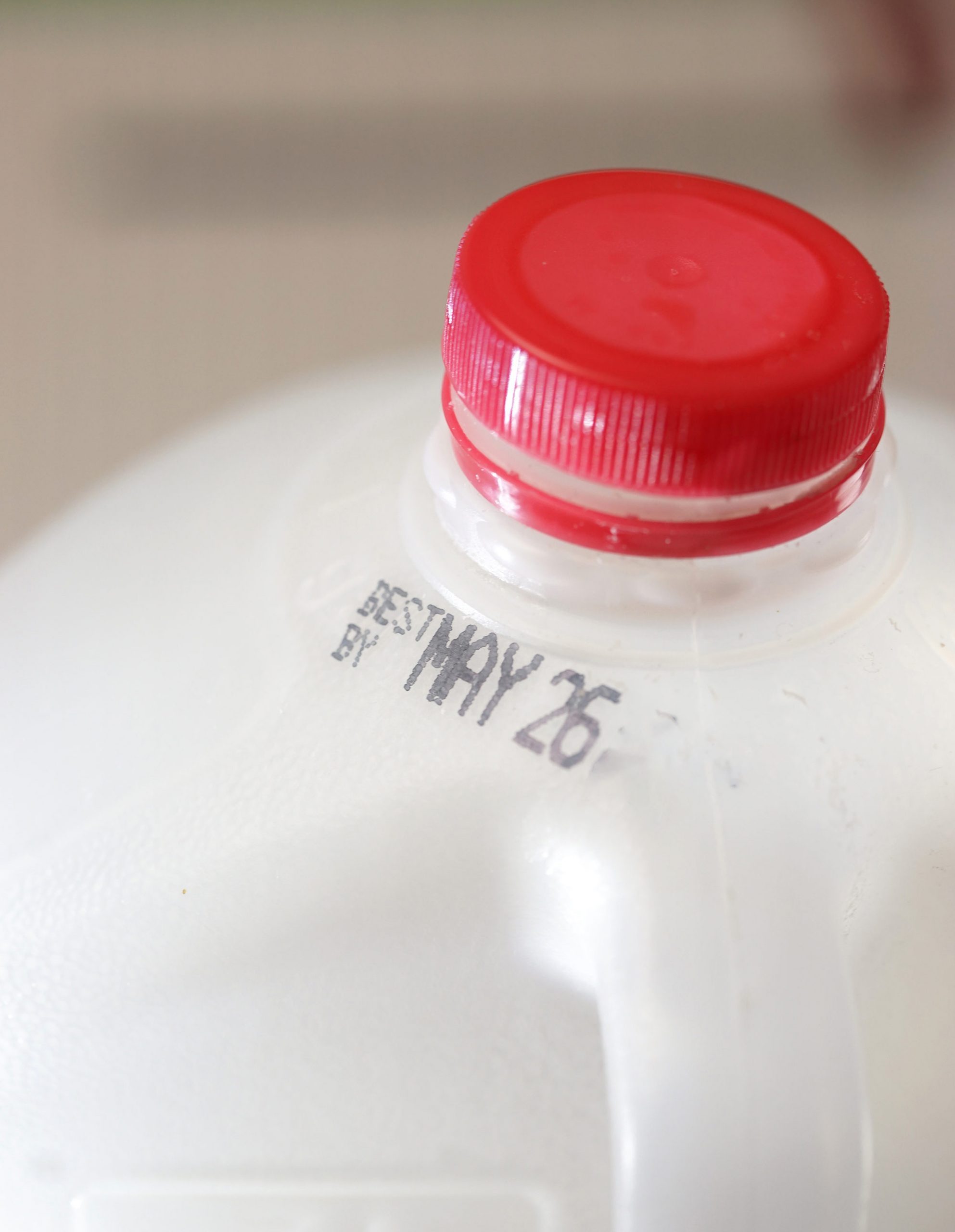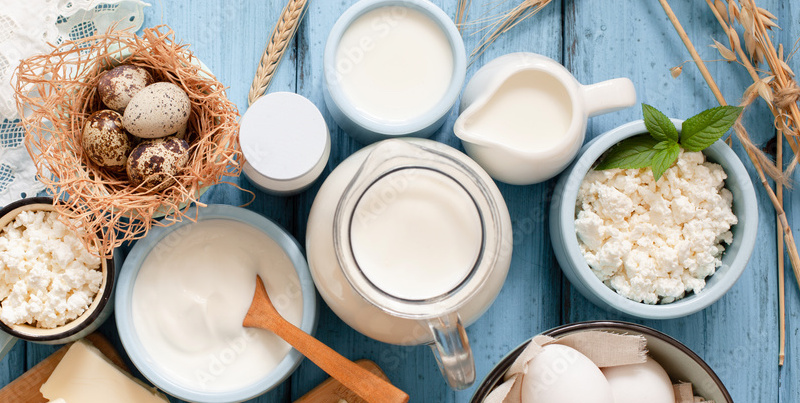People have been milking domesticated farm animals as far back as 6,000 years ago. That cow, goat, or yak milk (and the things which are made from it, like cheese or ice cream) are collectively known as “dairy products.”
The word “dairy” is about 500 years old, originally from the Old English daie-maid (the female servant in charge of milking cows). THAT word became daerie in the 1600s and referred to the building where cows were kept and later, where milk and butter were sold. And then, 200 years later in the 1800s… dairy. Everything milk.
These days, the broad term “Dairy” refers to milk and milk products that comes from the mammary glands of mammals, primarily cows. Most milk products in the United States are processed to remove harmful bacteria that could make people sick. Two processes applied to milk products are pasteurization (poss-cher-i-ZAY-shun) and homogenization (huh-MAH-juh-ni-ZAY-shun):
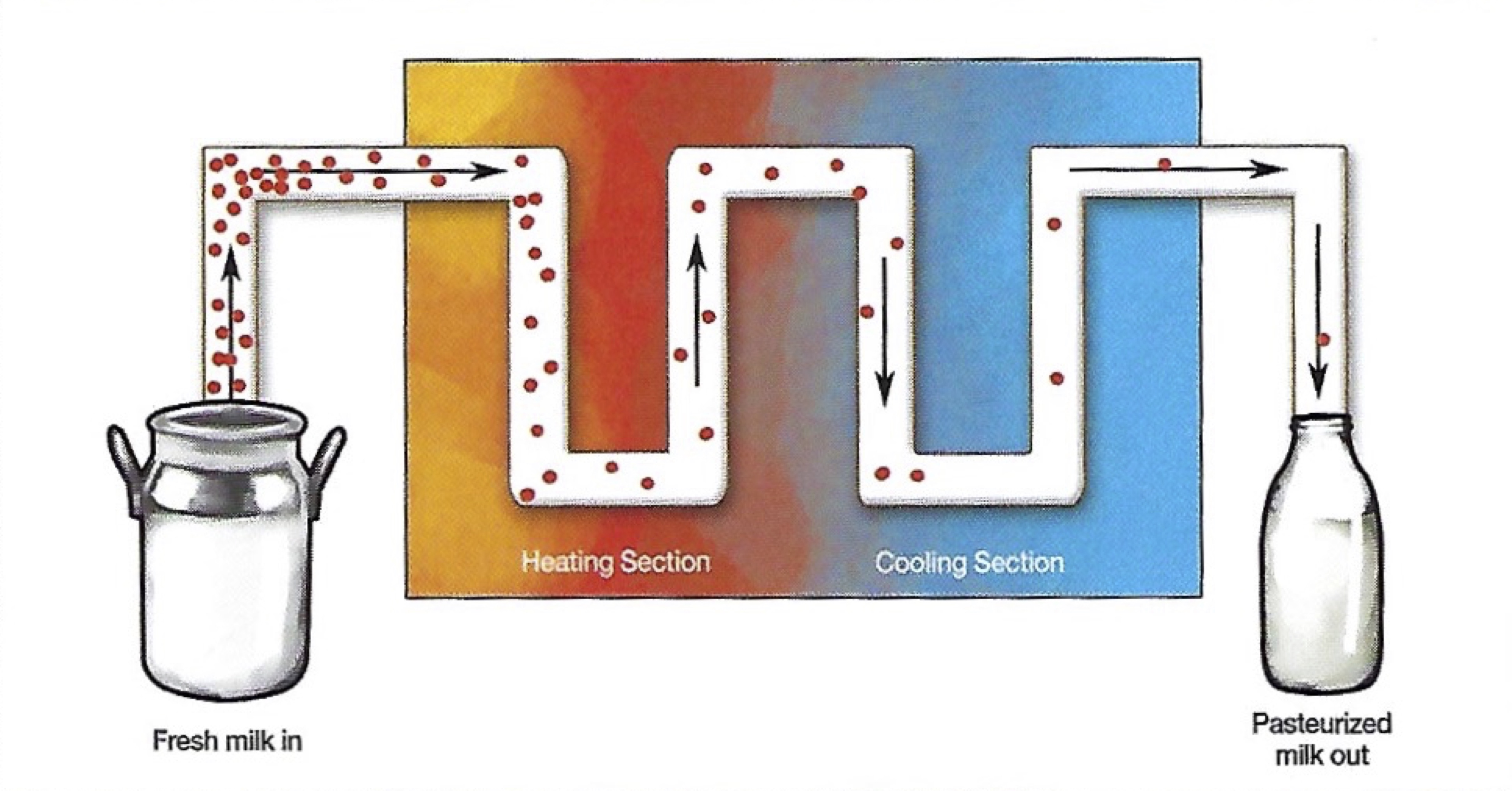
Pasteurization: Milk is fed through heating tubes and brought to between 135 – 145*F for a few minutes. This kills many of the microorganisms that cause spoilage and disease without affecting its nutritional value. It is then cooled rapidly and bottled.
Homogenization is the process of reducing a substance, such as the fat globules in milk, to extremely small particles and distributing it uniformly throughout a fluid, such as milk. When milk is properly homogenized, the cream will not rise to the top. The process involves forcing the milk through small openings under high pressure, thus breaking up the fat globules.

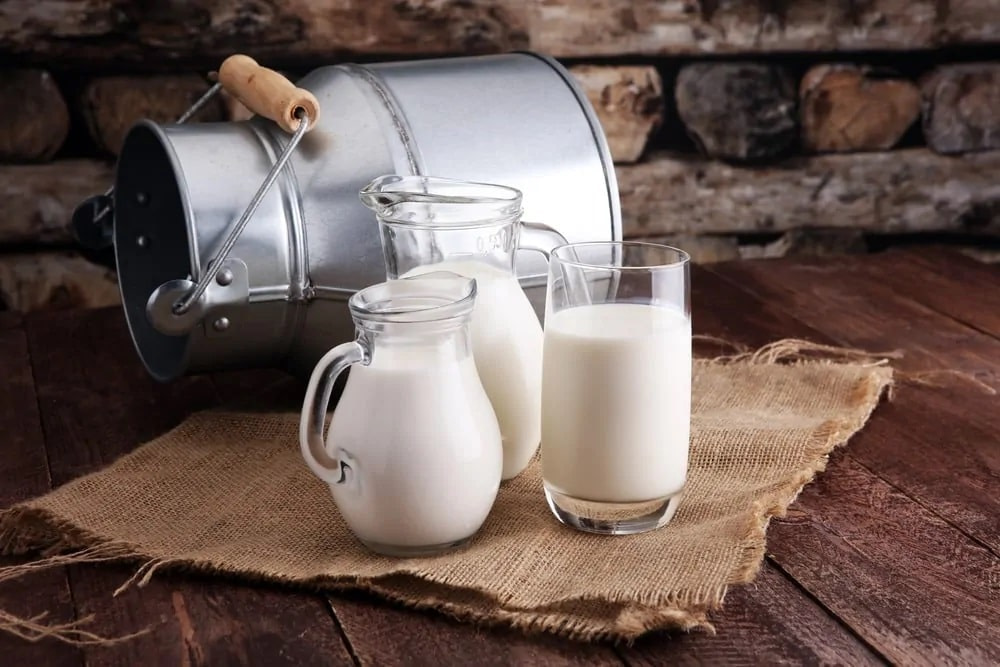
Varieties of Milk Products
There are many different types of dairy milk. The type of milk utilized is often based on the nutritional value – specifically the fat content.
| Type | Fat Content | Notes |
|---|---|---|
| Whole | At least 3.25% | Closest to the way milk comes from the cow before processing |
| Low fat | Available in 1% and 2% | Creamy but not as rich as whole milk |
| Skim | Less than 0.5% (usually 0.1%) | Least creamy and lowest in calories |
| Buttermilk | Depends on the type of fresh milk used | Made from fresh liquid milk that has bacteria added to it to create a sour taste; Doesn’t actually contain butter; Has a rich, thick, texture and tangy acid taste that is valued in the baking and preparation of many items, such as salad dressings |
| Evaporated | At least 6.5% | Made from milk by removing 60% of the water; Has a slight cooked flavor from its canning process; Usually Used In Baking; helps bring richness without excess moisture |
| Condensed | At least 8.5% | Tastes richer and sweeter than evaporated milk; Made from whole milk by removing 60% of the water and then sweetening with sugar; Used in specialty baking when richness and sweetness are desired; Cannot replace evaporated or other milk products unless the recipe’s sugar content and fat content are adjusted |
| UHT (ultra-high temperature) | Depends on the type of fresh milk used | Processed With High Heat, cooled, and then packaged in a sterile environment to avoid contamination; Does Not Need Refrigeration; Has a shelf life of nine months |
| Powdered | Depends on the type of fresh milk used | Usually Made From Whole Or Skim Milk; Made from milk by removing all of the water; Can improve the reconstituted flavor by serving the milk very cold; Often Used In Baking |
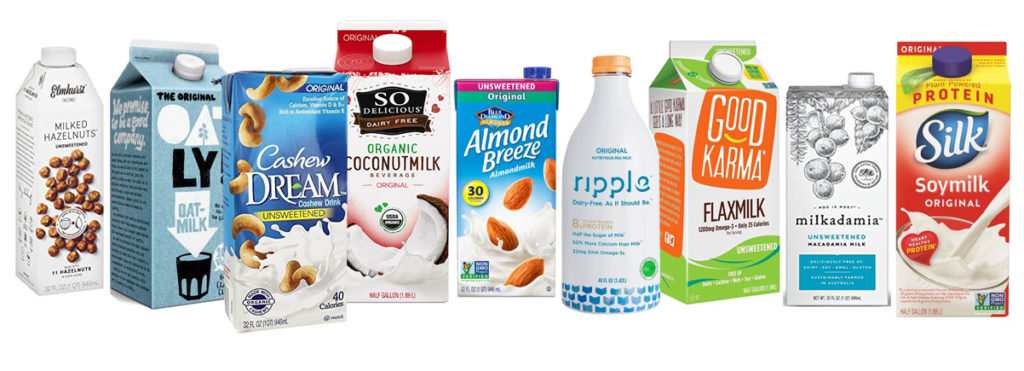
Milk Alternatives
Lactose-intolerant guests are probably going to want lactose-reduced or lactose-free milk.
Lactose intolerance is a common digestive issue that causes a negative reaction to many cultured dairy products, not just milk. Lactose intolerance is sometimes called a milk allergy, however, it is not one.
Casein is a protein found in milk. A casein allergy is a true protein-sensitive allergy, and people with such an allergy must avoid all dairy food. Dairy alternatives, such as soy, rice, almond, and coconut milk, can be used instead.
It is also important to recognize that low-fat and skim milks behave differently in cooking than whole milk does. Fat brings flavor, body, and mouthfeel to a dish. If a chef reduces the fat in the milk, the ingredient will perform differently in the recipe.
| Type | Fat Content | Notes |
| Soy milk (nondairy) | Four grams of fat per eight-ounce serving (fortified) | Often Fortified With Vitamins (including calcium, and perhaps vitamin D and riboflavin) and offered in low-fat forms; Has a slightly nutty flavor with a rich texture; Is available in different flavors; Good Source Of Protein; has no cholesterol |
| Rice milk (nondairy) | Three grams or less per eight-ounce serving | Often Fortified With Vitamins (check for the addition of calcium, vitamin D, and riboflavin); Usually made with water, brown rice syrup, starch, and other thickeners; Has a sweet flavor and a thin texture; Is Available In Different Flavors; Has less protein than milk or soy milk |
| Almond milk (nondairy) | Two to three grams per eight-ounce serving | Made From Ground Almonds And Water; Low in Calories And Saturated Fat; Contains No Cholesterol Or Lactose; May be Sweetened And Flavored (e.g., chocolate, vanilla); Often fortified with calcium and vitamin D |
| Coconut milk (nondairy) | Thick: 20%to 22% Thin: 5%to 7% | Made From Grated Brown Coconut and water; Mild, sweet taste, with little or no coconut smell; Often used in baking and cooking |

Types of Cream
Cream contains far more fat than milk. Chefs use it primarily for the fat content, which provides richness. Creams with more than 30 percent fat are stable when whipped and whipped creams add elegance and flavor to many desserts. Heavy creams also bring richness and a silky texture to sauces and dressings.
| TYPE OF CREAM | AMOUNT OF FAT | NOTES |
|---|---|---|
| Light whipping cream | At least 30% but less than 36% | Used in sauces and soups, and as a garnish for desserts |
| Heavy whipping cream | 36% to 38% | Used to make whipped cream |
| Very heavy whipping cream | 40% | More stable than heavy cream; Produces a greater yield and a longer shelf life for the products made with it |
| Light cream | 18% to 30% | Sometimes Called Coffee Cream |
| Half-and-half | 10.5% to 18% | One part milk/ one part cream; technically half-and-half does not have enough fat in it to be called cream |
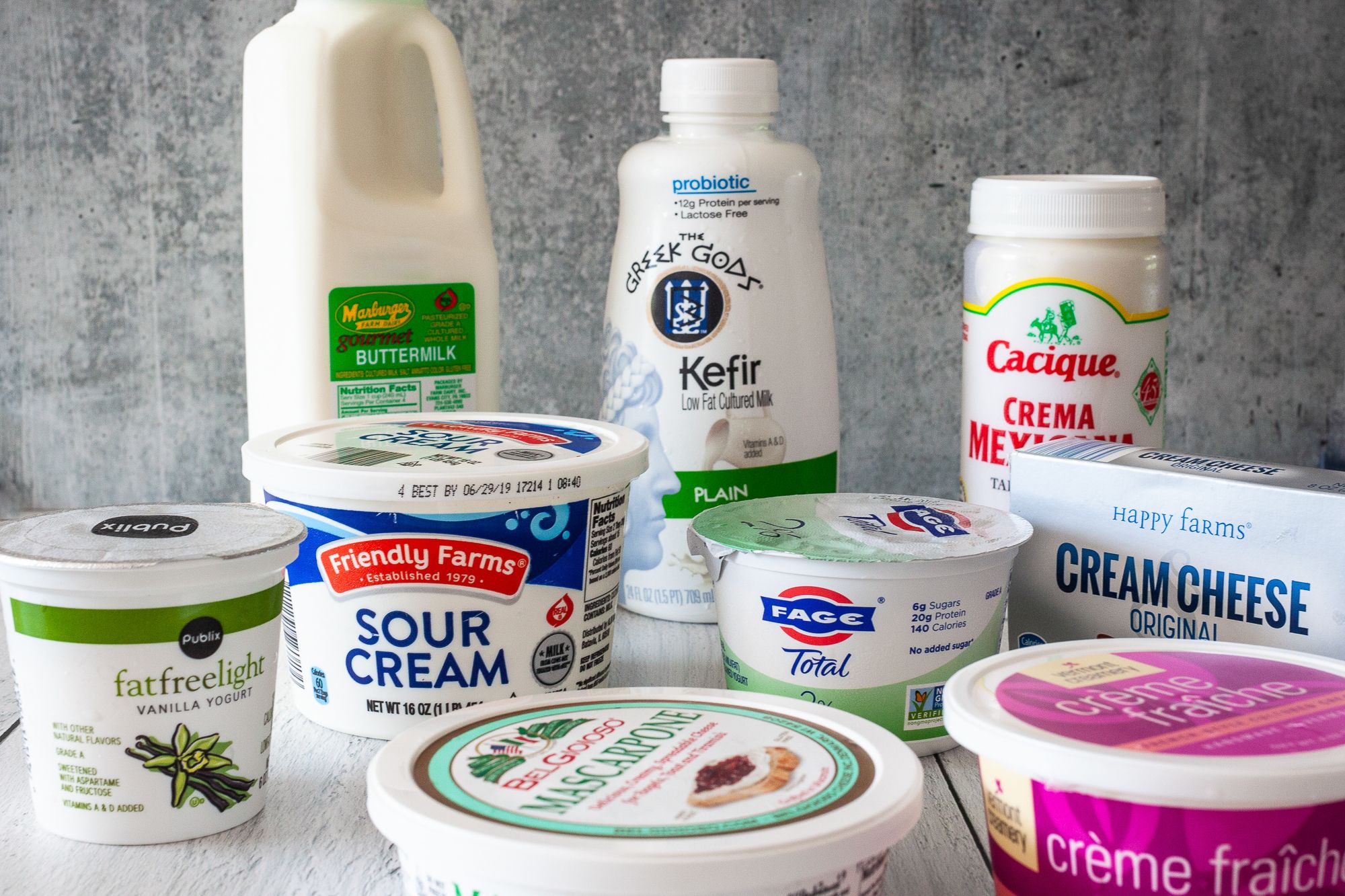
Cultured Dairy Products
Cultured dairy items may include buttermilk, yogurt, sour cream, and creme fraiche (a soured cream with butterfat, pronounced “krem fresh”). Sometimes referred to as “fermented” dairy products, these food items have undergone a process called fermentation.
What happens to milk during fermentation? Bacterial cultures are added to the milk. Many of these products are fermented with lactic acid bacteria, or lactobacillus. The mixture is then heated to around 110°F for several hours. The bacteria eat the sugar (lactose) in the milk. This lowers the pH level of the mixture.
The low pH level causes the “sour” taste we associate with yogurt, sour cream, and buttermilk. Fermentation changes the flavor and extends the shelf life of the food. The extended shelf life allows the item to be kept longer and ensures safer food.
There has been a lot of talk about the health benefits of cultured dairy products. The term probiotic refers to a dietary supplement containing live bacteria (as lactobacilli) that is taken orally to restore beneficial bacteria to the body. There have been many claims about the health benefits of taking probiotics. However, not much scientific evidence exists to prove these claims.
| Type | Amount of Fat | Notes |
|---|---|---|
| Buttermilk | 1% to 2% | Traditional buttermilk is the liquid left after churning butter out of cream; Cultured Buttermilk Has Been Fermented Using lactic acid bacteria; Can separate as it sits; shake before use; Also available in a powdered form |
| Yogurt | 0.5% to 4% | Many Varieties Are Flavored With Fruit; Source Of Protein; Often Consumed By Vegetarians; “Greek”variety has twice as much protein as regular yogurt; 15- 20 grams per serving; “Greek”yogurt is higher in fat |
| Sour cream | 18% to 40% | Available as “light,” “low-fat,” and “fat-free” |
| Creme fraiche | 30% to 45% | Unlike U.S. sour cream, it is less sour and thinner,with a higher fat content |

Ordering and Receiving Milk and Dairy Products
Milk can be received at 45°F (7°C) or lower. Then it must be cooled to 41°F (5°C) or lower within four hours.

Cream and other dairy products must be received at 41°F (5°C) or lower.
All milk, cream, and cultured dairy products should be labeled “Grade A.” This means that the product meets standards for quality and safety set by the FDA and the U.S. Public Health Service. Milk, cream, and cultured dairy products should have a sweetish flavor. Items that are too sweet or that have a sour, bitter, or moldy taste should be thrown out.
Always use the FIFO (first-in, first-out) method of stock rotation for these dairy products. With the FlFO method, store products to ensure that the older products are used first. For example, place products with an earlier use-by or expiration date in front of products with later dates. Any dairy product that has passed its use-by, sell-by, or expiration date should be thrown away.
